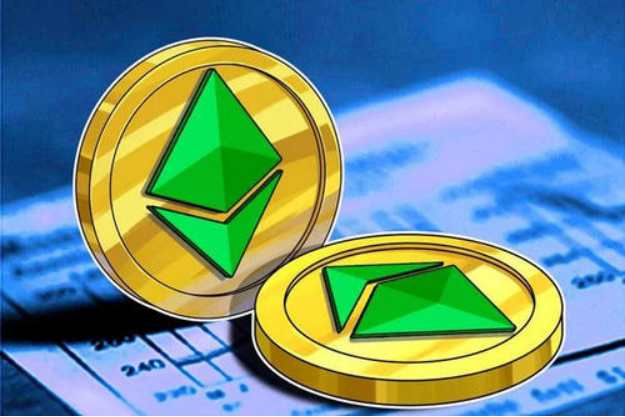 Ethereum Classic (ETC) is a platform that has attracted much attention in the world of blockchain technology, however, many people are still confused about the different types of tokens and how they operate. In this article, we will explore the basic concepts of ETC, including its native tokens, programmable tokens, and ERC-20 tokens, and explain why ETC is widely used in decentralized applications (dApps).
Ethereum Classic (ETC) is a platform that has attracted much attention in the world of blockchain technology, however, many people are still confused about the different types of tokens and how they operate. In this article, we will explore the basic concepts of ETC, including its native tokens, programmable tokens, and ERC-20 tokens, and explain why ETC is widely used in decentralized applications (dApps).
What is a native token?
Native tokens are tokens that are generated natively on a specific blockchain. Taking Bitcoin (BTC) as an example, every time a miner creates a block, the system will issue a certain amount of BTC. ETC is created in a similar way, and both can be considered "community fiat tokens" because they are issued to pay miners for their work in the network.
Both ETC and BTC are considered "hard currencies" because their issuance requires a large amount of computing power and electricity. This unforgeable scarcity, combined with their fundamental economic use, which is to pay block rewards, gives these native tokens their value. In addition, ETC and BTC are also used to pay transaction fees, which further enhances their economic use.
Programmable native token
ETC is not just a simple ledger system, it is a programmable native token. This means that users can not only perform basic transfer operations, but also extend its functionality by sending smart contracts. Smart contracts are software programs stored on the blockchain that, when executed, enable decentralization within the network. This programmability enables ETC to support a variety of applications, such as trading on decentralized exchanges, purchasing NFTs (non-fungible tokens), setting up estate plans, etc.
Understanding of ERC-20 tokens: In the ETC ecosystem, in addition to local tokens, there is also a token standard called ERC-20. ERC-20 tokens are applications created based on Ethereum’s smart contracts. They are similar to native cryptocurrencies but are not native tokens of the blockchain. These tokens can be used for a variety of purposes and have become an industry standard due to their flexibility and scalability.
The emergence of ERC-20 tokens enables developers to create various applications on ETC, thus promoting the development of the entire ecosystem. These tokens can be used not only for transactions but also for fund raising, governance, and a variety of other uses.
Why is ETC used in dApps?
As a programmable blockchain, ETC’s flexibility makes it an ideal platform for developing decentralized applications (dApps). Since ETC supports smart contracts, developers can build various applications on it, which can involve many fields such as finance, games, and social networking. In addition, the security and stability of ETC have also attracted many developers to choose to innovate on it.
In dApps, ETC is often used as a wrapper token, meaning it can be converted and used in different applications. This flexibility allows ETC to play an important role in decentralized finance (DeFi) and other applications.
Monetary policy for ETC and ERC-20 tokens
The monetary policy of ETC is different from that of ERC-20 tokens. The issuance of ETC is limited, which means that the scarcity of the token will continue to increase over time. The issuance amount of ERC-20 tokens is usually determined by developers, which makes their supply subject to large changes.
This difference makes ETC more attractive in the eyes of investors, as its value is likely to rise as demand increases. The value of ERC-20 tokens may be affected by market supply and demand, and investors need to evaluate carefully.
in conclusion
Ethereum Classic (ETC) is a powerful blockchain platform with a rich token ecosystem. Whether it is a native token, a programmable token, or an ERC-20 token, ETC offers a variety of possibilities for developers and users to innovate on top of it. With the development of blockchain technology, the potential of ETC will continue to grow and become an important part of the future digital economy.
Be sure to do your research before jumping into this field of opportunity, and remember: trust before you trust!